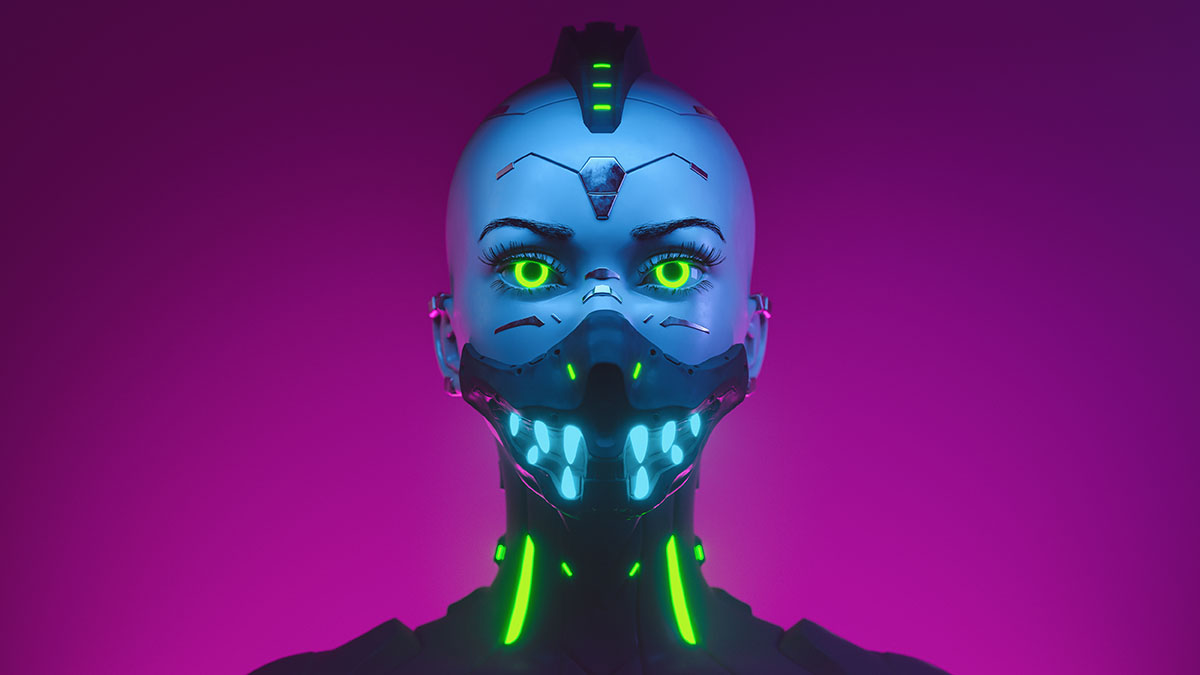why the future of cyborgs is squishy electronics

Any proper cyberpunk dystopia needs three things. First, you have to have neon lighting pretty much everywhere, ideally in a mix of blues, orange, and violet. Second, you need a vast global corporatocracy with private armies and mercenaries effectively running the planet. And third, you need cyborgs with all sorts of prominent, brutalist implants that often give the protagonists superhuman powers, which generally send corporate spies and law enforcement on their trails for the crime of being too awesome for their own good.
Of course, the reality is a bit different. Pretty much any of the cyberpunk style implants you see in science fiction, from The Matrix to Edgerunners, would be deeply problematic because they attach to human bones and muscles, and have a sharp division between human and machine. Plugs of farmed humans in The Matrix would be constantly getting infected, and the artificial limbs and implants of Edgerunners would either be limited by the strength of human bodies to which they are attached, or constantly break bone and tear muscle when in use.
Another curveball to cybernetic implants is the buildup of collagen over anything foreign, our bodies’ attempt to isolate something that the immune system can’t destroy, slowly preventing it from interacting with the rest of our cells. As the implant remains inside a person, more and more collagen gets built around it, which becomes a series problem for things like electrodes designed to interact with the heart, brain, or peripheral nerves. Eventually, their signals could be degraded to the point of uselessness.
the hidden power of soft, flexible robotics
Now, at the same time, it seems pretty much inevitable that we’re going to merge with some of our machines eventually. There’s simply too much cultural inertia and too many reasons for us to keep pushing the envelope in that direction. But if we can’t just follow the blueprint left for us by Ghost In The Shell and Warhamnmer because that way lie infections, a discouraging lack of superhuman strength and speed, and planned obsolescence, how could we turn fantasy into reality? The answer is to make our implants squishy and fully biocompatible.
One example of this is a new technology known as the graphene tattoo. It’s meant to be a new generation of pacemakers, designed to cling to the heart in ultrathin layers of graphite mesh an atom thick, helping to conduct electricity to keep the heart beating in a proper rhythm. This is a major upgrade on snaking thin wires through the heart and hoping it can keep flexing 100,000 times a day or more, and the thinness of this mesh could make it impervious to the body trying to wrap graphite strands in protective collagen due to their small size and biocompatibility.
Rather than imagining grids of metal electrodes and robotic arms screwed into bone with large titanium bolts when the subject of cyborgs and next gen medical implants comes up, just think about sheets of transparent, mesh-like material melding with bone, muscle, and neurons driven by simple, tiny machines with built-in neural networks constantly refining themselves based on a patient’s feedback. And instead of metal plugs or anchor points slithering under the skin, just picture gel like substances that combine with skin, creating a seal against pathogens.
all hail our squishy cyborg overloads?
So, what does all this mean in the grand scheme of things? It means you’re very unlikely to ever see “bionic” implants and obviously modified humans walking down the street in a busy, neon lit hyper-city, but cyborgs will be all around you. They’ll just be hidden in plain sight, their bodies secretly riddled with nanomeshes and graphene wiring that seamlessly molds, and works with their organs and tissues, administered by injections, transfusions, and laparoscopic procedures rather than soldered into patients pried open with scalpels and bone saws.
Of course, there will be artificial limbs and muscles as well, but servos and rigid plastics, metal, and wiring will give way to squishy, human-like appendages which integrate with our neurons and are driven by small magnets and biocompatible fluids. Their movements will be far more natural, smooth, and their built-in AIs will be easier to train. And if you’re a fan of cyberpunk looking forward to robotic appendages with neon accents, good news! Many recipients would, and could, make them stand out with decorations or different color palettes.
They won’t give us superhuman strength or speed, not until our bones are either replaced with titanium, or reinforced with carbon nanotubes, and any special ability will be internal. There will be a lot less effortlessly smashing through walls or outrunning a car on a highway — which won’t happen anyway since human speed is limited by the length of our limbs — and a lot more built-in augmented reality and direct interfacing with search engines, translators, and maps. And this is how the merger with machines will start: medicine, to fashion, to convenience, to normality.





